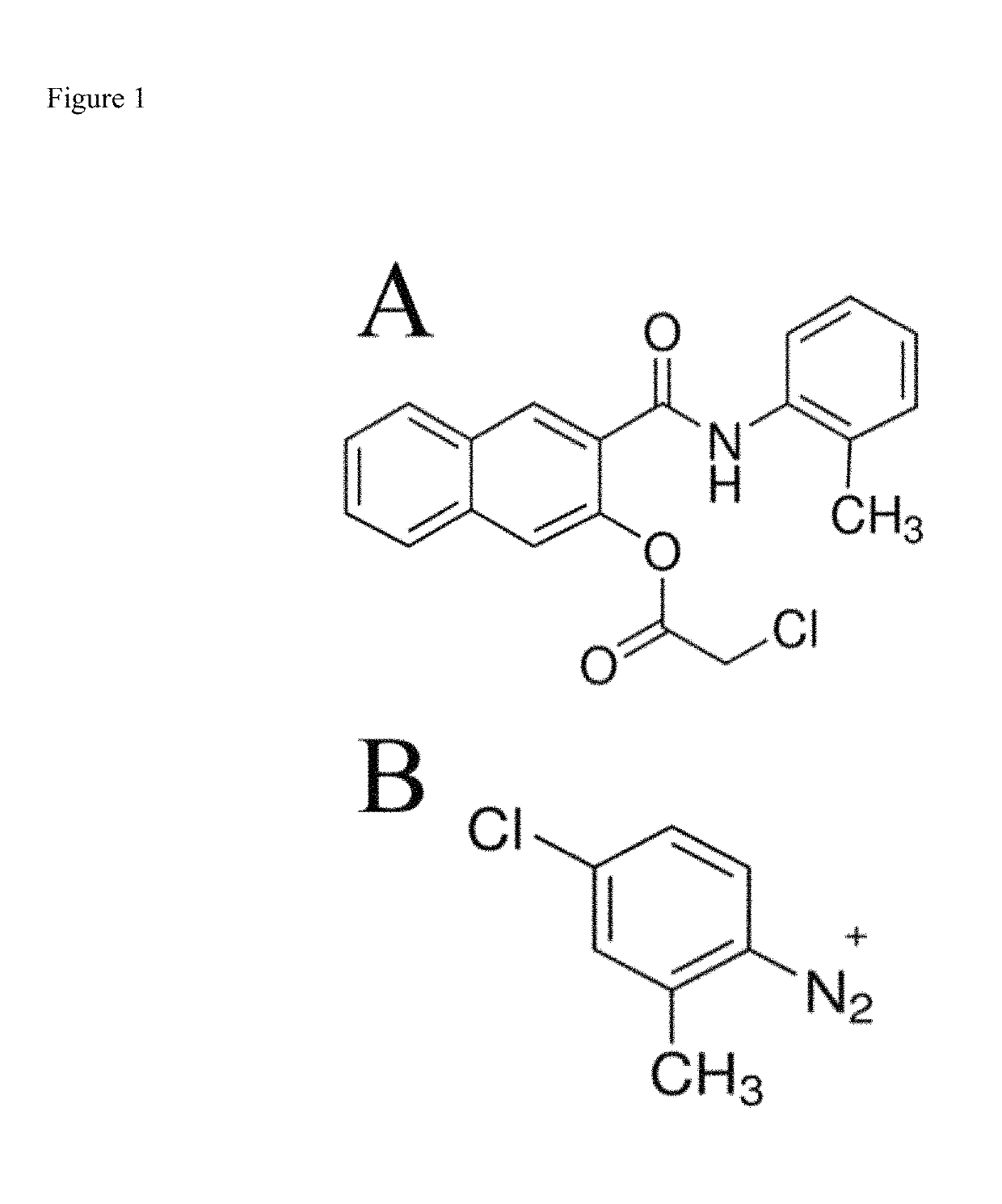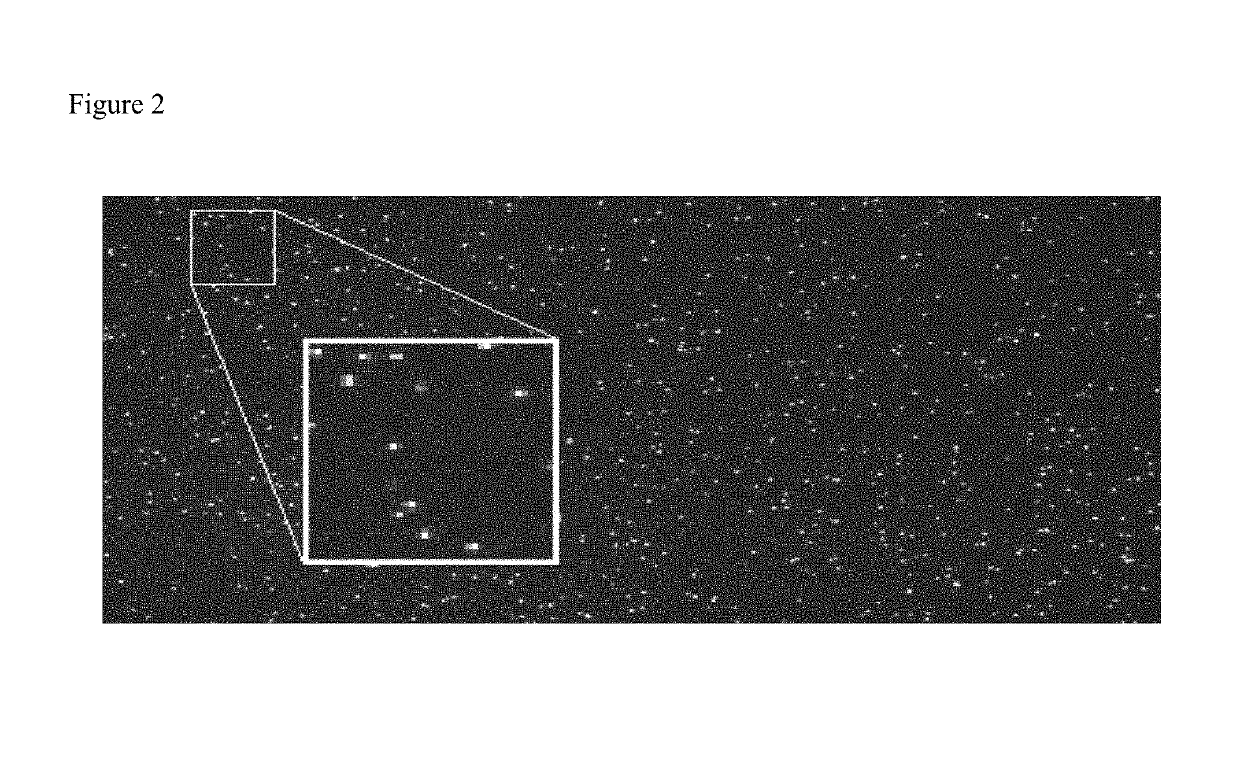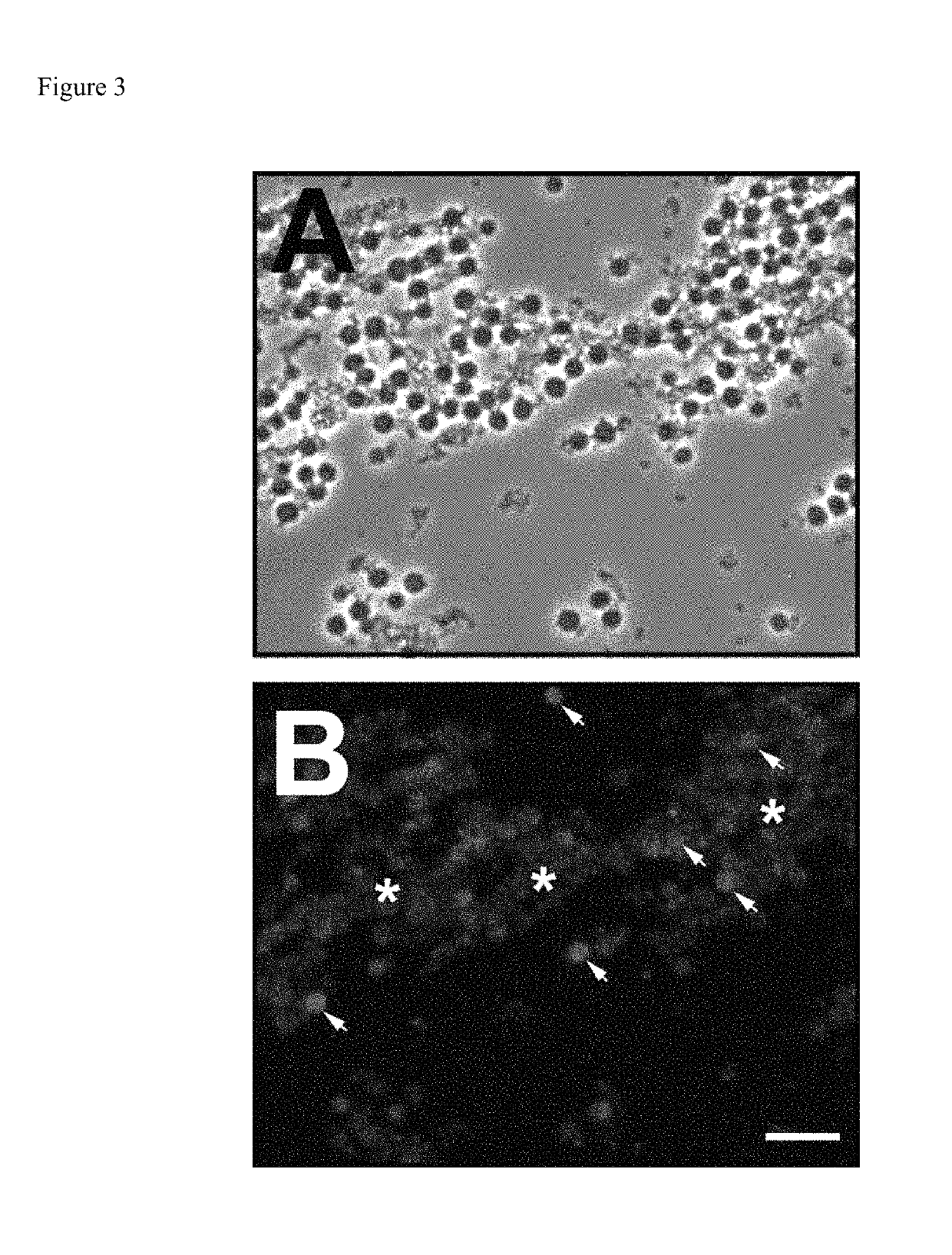Method for the rapid and convenient detection and enumeration of neutrophils in biological samples
a biological sample and neutrophil technology, applied in the field of inflammatory conditions, can solve the problems of general limitation of methods for identification and enumeration of neutrophils, lack of specific antigenic cross-species markers for this cell type,
- Summary
- Abstract
- Description
- Claims
- Application Information
AI Technical Summary
Benefits of technology
Problems solved by technology
Method used
Image
Examples
Embodiment Construction
[0053]CAE activity is commonly detected using the Fast Red (FR) series of diazonium salts, though other salts, such as nitrosylated pararosanilin and Fast Corinth V, are used to produce azo dyes of different colors. Furthermore, not all diazonium salts produce azo dyes with the same (or any) fluorescent properties63. Any diazonium salt capable of reacting the CAE cleavage product of NCA to generate a fluorescent moiety could be used for the purposes of practicing this invention. Because FRTR has, however, been shown to produce an intensely fluorescent product following reaction a dephosphorylated naphthol phosphate in a phosphatase assay, upon conceiving of the invention, the inventor tested the ability of CAE to render neutrophil cells isolated from equine peripheral blood fluorescent after treatment with a combination with NCA (0.2 mg / ml) and FRTR (2 mg / ml) in a buffer of phosphate buffered saline (PBS).
[0054]While this mixture did indeed produce fluorescent material when examined...
PUM
| Property | Measurement | Unit |
|---|---|---|
| diameter | aaaaa | aaaaa |
| concentration | aaaaa | aaaaa |
| concentration | aaaaa | aaaaa |
Abstract
Description
Claims
Application Information
 Login to View More
Login to View More - R&D
- Intellectual Property
- Life Sciences
- Materials
- Tech Scout
- Unparalleled Data Quality
- Higher Quality Content
- 60% Fewer Hallucinations
Browse by: Latest US Patents, China's latest patents, Technical Efficacy Thesaurus, Application Domain, Technology Topic, Popular Technical Reports.
© 2025 PatSnap. All rights reserved.Legal|Privacy policy|Modern Slavery Act Transparency Statement|Sitemap|About US| Contact US: help@patsnap.com



